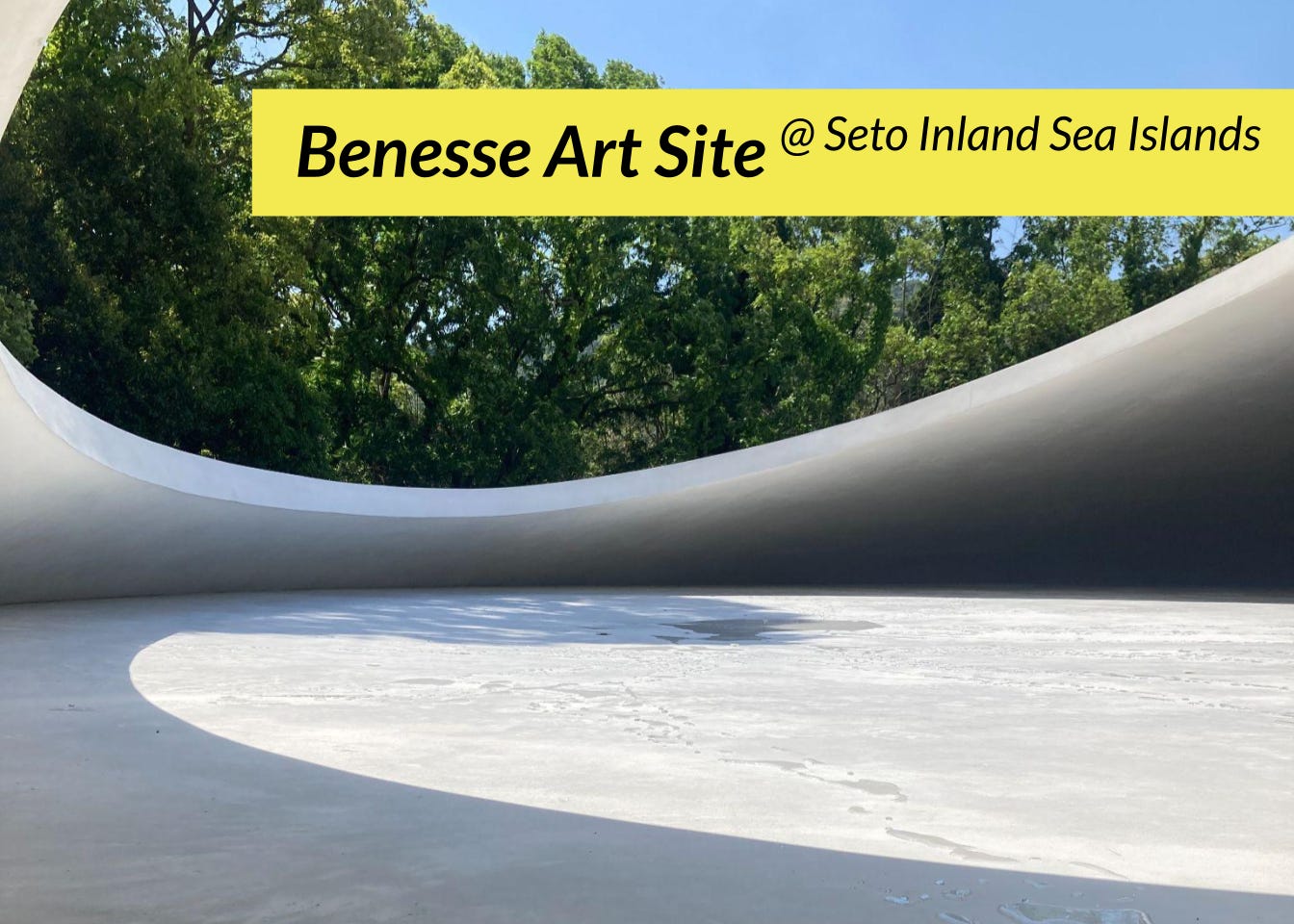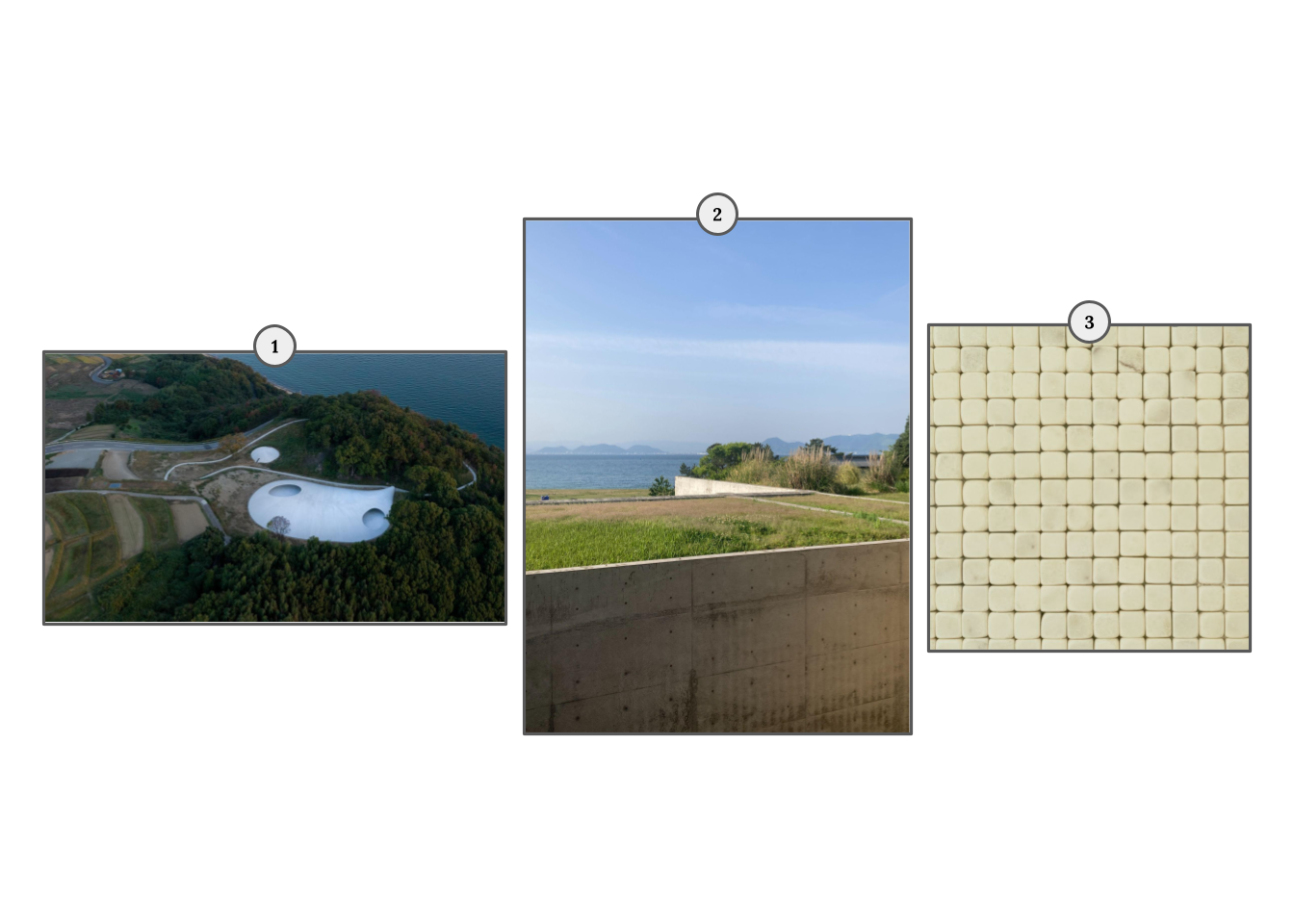Setting the Stage to See Art
Billionaire Soichiro Fukutake goes beyond curating art, harnessing nature and architecture to curate the experience of art at his many museums spread across an art archipelago in Japan.
Sometimes I think art today can be defined less by the work itself, and more by the context in which it’s presented.1 In a time where we are drowning in content of all forms—images, opinions, audio, video—all the time, an object transforms into a work of art when we're able to carve out the attention needed to reflect on and appreciate it as one.
This could happen because something is so awe-inspiring and striking that it makes us stop what we're doing and draws us in (which aligns with more traditional definitions of art). Or, it could happen because we encounter the art in a physical or emotional state that helps us slow down and focus in on it.
All museums and galleries attempt to create these spaces for contemplation to some extent, but probably the most stand-out example I've experienced so far has been the collection of 'art shrines' on the islands of Naoshima and Teshima in Japan's Seto Inland Sea.2 What began as a CSR initiative by publishing company Benesse Holdings (and its founding Fukutake family) to revitalise rural regions polluted through industrialisation, has, over the last 35 years, become an intentional exercise in exploring how nature and architecture can enable an unrivalled experience of art.
THE WORK
What makes this example of curation a little different is that we're not talking about artworks in a single exhibition or museum— we're talking about blue-chip (AKA very expensive) art presented in several custom-built spaces, including:
water-lily paintings by Monet in the Chichu Art Museum (the museum also houses two site-specific installations by James Turrell and Walter de Maria)
seven 'art houses' where artists like Hiroshi Sugimoto and James Turrell have transformed traditional houses in a residential neighbourhood into works of art
an installation by Rei Naito experienced in the Teshima Art Museum, a striking structure shaped like a water droplet
There are also a couple of more typical-feeling museums (like the Benesse House Museum and Lee Ufan Museum) that show many smaller works in a series of galleries vs just one or a few large-scale installations. But even in these, the pieces are given huge amounts of space to breathe on the walls.
THE WOW FACTORS
The time and effort needed to get to the 'art shrines' in the first place means you arrive primed to see something worthy of the journey you've made. I don't want to pretend this destination is totally off the beaten path — a million people visited in 2019, and I imagine 2025 visitor figures are even higher given how popular Japan has been with tourists post-pandemic. But if you're travelling from a major city like Tokyo or Osaka, you'll need to take at least a Shinkansen bullet train, a local train, and a ferry (which cannot be pre-booked — you check an old school timetable and then pay for your tickets in cash before you board) to get to the islands. Once you're there, you have to rent bikes or rely on infrequent minibuses (and more old-school timetables) to get to each of the different sites.
Then, the design of the specific spaces and surroundings themselves further inspire the presence and slowness that help you see art in a new, deeper way. Here's how:
(1) Necessary Nature Walks
The art sites are often designed so the entrance is set at the end of a path that takes you through nature. Probably the best illustration of this is on Teshima, where after cycling through rice paddies, you arrive at a ticket office close to the structure you correctly assume is the art museum. But, instead of walking the short and direct route into the exhibition space, you are directed towards a winding route that takes you through a thicket of trees and past coastal views before you loop back into the museum. All your senses are simultaneously engaged and calmed before you even see the art.
(2) Surprising Spaces
Many, though not all, of the buildings are designed by renowned architect Tadao Ando who talks about ‘invisible buildings’ which ‘merge into the topography and environment’. What's exciting about his architecture is that you can’t really see his structures from the outside; they are often partially buried underground and blend into the nature around them. Because of this, you enter a space with no idea of how big it will be or how you’ll move through it, making your eventual encounter with the art inside feel like a delightful surprise even as you expect it.
(3) Tactility and Texture
My visit to the Benesse Art Sites was probably my most physical encounter with art yet. While you're not allowed to touch the art works themselves, there is a lot of materiality built into the viewing (rather, sensing) experience. Over a year on from my visit, I'm still thinking about the experience of standing on the tiles in the Claude Monet room at Chichu art museum. Before you enter, you're asked to switch your shoes to slippers as the room features 700,000 tiny white cubes of Carrara marble as its floor. You also take your shoes off when entering Teshima Art Museum, where Rei Naito's artwork blends with cool concrete floor. We lay down for over an hour observing the artist's little water droplets form and travel as if by magic. Likewise, in many of the smaller 'art houses' you are grounded by natural materials used for the floors and walls: cedar, stone, paper, and in one case, pure earth.
If you know me in real life, you will know I generally live at quite a fast pace. I walk fast, read fast, and even see art fast — often reaching the end of an exhibition while my husband is still looking around one of the first galleries. But even I was forced to slow right down when on Naoshima and Teshima — and I'm so grateful for everything that went into enabling that rich art experience.
Thanks for reading! I know the Japanese art islands are on many of your to-travel lists. If you have been, I'd love to hear what resonated about your experience. If you haven't been, and have any questions about planning a trip, let me know! My top tip is to make time for dinner in Port Uno before or after your visit — specifically for one of the unexpectedly best pizzas I think I've had anywhere.
'What is art?' is one of those big, scary questions that I don't feel qualified to answer, so please take my suggestion as a line of inquiry I've been thinking a lot about, rather than any sort of proposed definition. If you're interested, I've been maintaining this collection of art definitions that I've come across in my reading.
There are two other islands in the archipelago, Inujima and Megijima, that also feature Benesse Art Sites. I haven’t mentioned works or spaces from those islands because I didn’t make it over to them on my trip — next time, hopefully!



